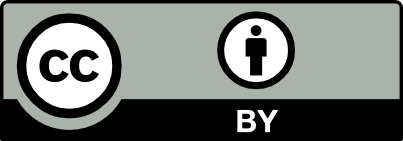[Modélisation dynamique de l’endommagement par l’approche champ de phase : évaluation, analyse critique et comparaison]
This work assesses the ability of various phase field approaches to model dynamic damage evolution up to fracture. The damage evolution can be formulated using several types of Partial Differential Equations (PDEs), such as elliptic, parabolic and hyperbolic damage PDEs. The latter enable the use of explicit time integration, which is a crucial feature if an implementation in solvers dedicated to transient analysis is targeted. The challenge of the damage irreversibility constraint through different strategies is also investigated. It is shown that the classical history variable does not strictly assure the damage irreversibility and can induce some numerical instabilities. However, combining this history variable with the damage viscosity term of the PDE might help to restore the irreversibility, even though explicit time stepping offers the opportunity to force this condition algorithmically. Finally, we propose a quantitative comparison of the solutions of each phase field dynamic approach through physically-based metrics. Eventually, the classical Kalthoff experiment is simulated and the predictions of different PDEs with different set of damage parameters are compared.
Ces travaux évaluent l’aptitude de différents modèles à champs de phase pour modéliser l’évolution dynamique de l’endommagement jusqu’à rupture. L’évolution de l’endommagement peut être décrite par une équation à dérivée partielle (EDP) de type elliptique, parabolique ou hyperbolique. Ces dernières permettent l’utilisation de schémas d’intégration explicites, stratégie majoritairement employée dans les cas d’étude de dynamique transitoire. La condition d’irréversibilité de l’endommagement a également été imposée de différente manières. Il est montré que l’utilisation d’une variable d’histoire de la densité d’énergie élastique positive ne permet pas de garantir. strictement l’irréversibilité et peut induire des instabilités. Néanmoins, si cette stratégie est combinée à l’utilisation d’un terme de viscosité d’endommagement dans l’EPD gouvernant son évolution, il est possible d’assurer l’irréversibilité. Autrement, le cadre explicite de la stratégie de résolution offre la possibilité d’imposer l’irréversibilité de façon algorithmique. Ensuite, au travers des cas test d’une barre en traction et de l’expérience d’impact de Kalthoff et al., des études paramétriques ont été effectuées pour évaluer la sensibilité aux paramètres des EPDs. Pour finir, une étude comparative des solutions obtenues par les modèles de champs de phase en dynamique a été réalisée via l’utilisation de métrique basée sur des quantités physiques.
Révisé le :
Accepté le :
Publié le :
Mots-clés : Rupture dynamique, Formulation d’endommagement, Intégration temporelle explicite, Analyse de sensibilité
Lamia Mersel 1, 2 ; Pascal Bouda 3 ; Jérémy Germain 1 ; Julien Réthoré 2
 CC-BY 4.0
CC-BY 4.0
@article{CRMECA_2025__353_G1_687_0,
author = {Lamia Mersel and Pascal Bouda and J\'er\'emy Germain and Julien R\'ethor\'e},
title = {Dynamic damage modelling through phase-field approaches: assessment, critical analysis and comparison},
journal = {Comptes Rendus. M\'ecanique},
pages = {687--724},
publisher = {Acad\'emie des sciences, Paris},
volume = {353},
year = {2025},
doi = {10.5802/crmeca.297},
language = {en},
}
TY - JOUR AU - Lamia Mersel AU - Pascal Bouda AU - Jérémy Germain AU - Julien Réthoré TI - Dynamic damage modelling through phase-field approaches: assessment, critical analysis and comparison JO - Comptes Rendus. Mécanique PY - 2025 SP - 687 EP - 724 VL - 353 PB - Académie des sciences, Paris DO - 10.5802/crmeca.297 LA - en ID - CRMECA_2025__353_G1_687_0 ER -
%0 Journal Article %A Lamia Mersel %A Pascal Bouda %A Jérémy Germain %A Julien Réthoré %T Dynamic damage modelling through phase-field approaches: assessment, critical analysis and comparison %J Comptes Rendus. Mécanique %D 2025 %P 687-724 %V 353 %I Académie des sciences, Paris %R 10.5802/crmeca.297 %G en %F CRMECA_2025__353_G1_687_0
Lamia Mersel; Pascal Bouda; Jérémy Germain; Julien Réthoré. Dynamic damage modelling through phase-field approaches: assessment, critical analysis and comparison. Comptes Rendus. Mécanique, Volume 353 (2025), pp. 687-724. doi : 10.5802/crmeca.297. https://comptes-rendus.academie-sciences.fr/mecanique/articles/10.5802/crmeca.297/
[1] Revisiting brittle fracture as an energy minimization problem, J. Mech. Phys. Solids, Volume 46 (1998) no. 8, pp. 1319-1342 | DOI | MR | Zbl
[2] The Variational Approach to Fracture, J. Elast., Volume 91 (2008) no. 1, pp. 5-148 | DOI | MR | Zbl
[3] Approximation of functional depending on jumps by elliptic functional via t-convergence, Commun. Pure and Appl. Math., Volume 43 (1990) no. 8, pp. 999-1036 | DOI | MR | Zbl
[4] Existence of solutions to a regularized model of dynamic fracture, Math. Models Methods Appl. Sci., Volume 20 (2010) no. 07, pp. 1021-1048 | DOI | MR | Zbl
[5] A phase-field description of dynamic brittle fracture, Comput. Methods Appl. Mech. Eng., Volume 217 (2012), pp. 77-95 | DOI | MR | Zbl
[6] Massive parallelization of the phase field formulation for crack propagation with time adaptivity, Comput. Methods Appl. Mech. Eng., Volume 312 (2016), pp. 224-253 | DOI | MR | Zbl
[7] Analyse de la rupture dynamique fragile via les modèles d’endommagement à gradient : principes variationnels et simulations numériques, Ph. D. Thesis, Université Paris-Saclay (2016)
[8] An explicit phase field method for brittle dynamic fracture, Comput. Struct., Volume 217 (2019), pp. 45-56 | DOI
[9] Dynamic crack propagation with a variational phase-field model: limiting speed, crack branching and velocity-toughening mechanisms, Int. J. Fract., Volume 204 (2017) no. 1, pp. 79-100 | DOI
[10] Evaluation of variational phase-field models for dynamic brittle fracture, Eng. Fract. Mech., Volume 235 (2020), 107169 | DOI
[11] Dependence of equilibrium Griffith surface energy on crack speed in phase-field models for fracture coupled to elastodynamics, Int. J. Fract., Volume 207 (2017), pp. 243-249 | DOI
[12] Generalized Ginzburg–Landau and Cahn–Hilliard equations based on a microforce balance, Physica D: Nonlinear Phenom., Volume 92 (1996) no. 3–4, pp. 178-192 | DOI | MR | Zbl
[13] A continuum phase field model for fracture, Eng. Fract. Mech., Volume 77 (2010) no. 18, pp. 3625-3634 | DOI
[14] A phase field model for rate-independent crack propagation: robust algorithmic implementation based on operator splits, Comput. Methods Appl. Mech. Eng., Volume 199 (2010) no. 45–48, pp. 2765-2778 | DOI | MR | Zbl
[15] Phase field approximation of dynamic brittle fracture, Comput. Mech., Volume 54 (2014) no. 5, pp. 1141-1161 | DOI | MR | Zbl
[16] Instability in dynamic fracture and the failure of the classical theory of cracks, Nat. Phys., Volume 13 (2017) no. 12, pp. 1186-1190 | DOI
[17] Modeling the dynamic and quasi-static compression-shear failure of brittle materials by explicit phase field method, Comput. Mech., Volume 64 (2019) no. 6, 20170457, pp. 1537-1556 | DOI | MR | Zbl
[18] Modeling brittle crack propagation for varying critical load levels: a dynamic phase-field approach, Int. J. Fract., Volume 245 (2024), pp. 1-17 | DOI
[19] Sur une forme de l’equation de la chaleur eliminant la paradoxe d’une propagation instantantee, C. R. Acad. Sci., Volume 247 (1958), pp. 431-433 | Zbl
[20] Finite-velocity diffusion, Eur. J. Phys., Volume 17 (1996) no. 4, p. 190 | DOI
[21] Conduction de la chaleur aux temps courts: les limites spatio-temporelles des modèles parabolique et hyperbolique, Int. J. Therm. Sci., Volume 39 (2000) no. 9, pp. 968-982 | DOI
[22] On Heaviside’s contributions to transmission line theory: waves, diffusion and energy flux, Philos. Trans. R. Soc. A, Volume 376 (2018) no. 2134, 20170457 | DOI | Zbl
[23] Damage, gradient of damage and principle of virtual power, Int. J. Solids Struct., Volume 33 (1996), pp. 1083-1103 | DOI | MR | Zbl
[24] Damage and principle of virtual power, C. R. Acad. Sci., Volume 317 (1993), 116643, pp. 857-864 | Zbl
[25] A rate-pressure-dependent thermodynamically-consistent phase field model for the description of failure patterns in dynamic brittle fracture, Ph. D. Thesis, University of Oxford (2017)
[26] Hyperbolic modeling of gradient damage and one-dimensional finite volume simulations, Comput. Methods Appl. Mech. Eng., Volume 419 (2024), 116643 | DOI | MR | Zbl
[27] Hyperbolic phase field modeling of brittle fracture: Part I—theory and simulations, J. Mech. Phys. Solids, Volume 121 (2018), pp. 81-98 | DOI | MR
[28] A maximum principle for periodic solutions of the telegraph equation, J. Math. Anal. Appl., Volume 221 (1998) no. 2, pp. 625-651 | DOI | Zbl
[29] A fourth-order phase-field fracture model: formulation and numerical solution using a continuous/discontinuous Galerkin method, J. Mech. Phys. Solids, Volume 165 (2022), 104910, 031007 | DOI | MR
[30] Linear and nonlinear solvers for variational phase-field models of brittle fracture, Int. J. Numer. Methods Eng., Volume 109 (2017) no. 5, 106821, pp. 648-667 | DOI | MR | Zbl
[31] Phase field modelling of anisotropic crack propagation, Eur. J. Mech.—A/Solids, Volume 65 (2017), pp. 279-288 | DOI | MR | Zbl
[32] Thermodynamically consistent linear-gradient damage model in Abaqus, Eng. Fract. Mech., Volume 266 (2022), 108390 | DOI
[33] Evolution of rate-independent systems, Handbook of Differential Equations: Evolutionary Equations, Volume 2, North-Holland, Elsevier, 2005, pp. 461-559 | MR | Zbl
[34] Approche variationnelle de l’endommagement: II. Les modèles à gradient, C. R. Méc., Volume 338 (2010) no. 4, pp. 199-206 | DOI | Zbl
[35] Strain-and stress-based continuum damage models—I. Formulation, Int. J. Solids Struct., Volume 23 (1987) no. 7, pp. 821-840 | DOI | Zbl
[36] Viscoelasticity and rate-dependent continuum damage models, CIMNE, Monography No-79, Technical University of Catalunya, Barcelona, 2003 (0-73)
[37] Anisotropic damage law of evolution, Eur. J. Mech.—A/Solids, Volume 19 (2000) no. 2, pp. 187-208 | DOI | Zbl
[38] The variational approach to fracture mechanics. A practical application to the French Panthéon in Paris, J. Elast., Volume 95 (2009), pp. 1-30 | DOI | MR | Zbl
[39] Regularized formulation of the variational brittle fracture with unilateral contact: numerical experiments, J. Mech. Phys. Solids, Volume 57 (2009) no. 8, 108390, pp. 1209-1229 | DOI | Zbl
[40] Continuous damage models for fracture of concrete, Proceedings of the International Conference on Fracture Mechanics of Concrete and Concrete Structures (FraMCoS-4) (Cachan, France), Volume 2, Swets & Zeitlinger, Lisse (2001), 113004
[41] A novel positive/negative projection in energy norm for the damage modeling of quasi-brittle solids, Int. J. Solids Struct., Volume 139 (2018), pp. 250-269 | DOI
[42] Regularized variational theories of fracture: a unified approach, J. Mech. Phys. Solids, Volume 58 (2010) no. 8, pp. 1154-1174 | DOI | MR | Zbl
[43] Dissymétrie de comportement élastique anisotrope couplé ou non à l’endommagement, C. R. Acad. Sci.-Ser. IIB-Mech., Volume 328 (2000) no. 6, 107169, pp. 445-450 | Zbl
[44] A damage model based on Kelvin eigentensors and Curie principle, Mech. Mater., Volume 44 (2012), pp. 23-24 | DOI
[45] Closed-form coordinate-free decompositions of the two-dimensional strain and stress for modeling tension–compression dissymmetry, J. Appl. Mech., Volume 86 (2019) no. 3, 031007 | DOI
[46] Implementation of a new strain split to model unilateral contact within the phase field method, Int. J. Numer. Methods Eng., Volume 121 (2020) no. 21, pp. 4717-4733 | DOI | MR | Zbl
[47] Strain energy density decompositions in phase-field fracture theories for orthotropy and anisotropy, Int. J. Solids Struct., Volume 196–197 (2020), pp. 140-153 | DOI
[48] Orthogonal decomposition of anisotropic constitutive models for the phase field approach to fracture, J. Mech. Phys. Solids, Volume 171 (2023), 105143 | DOI | MR
[49] Phase field method with strain orthogonal decomposition for modelling of damage in heterogeneous materials obtained by X-ray computed tomography images, Transp. Commun. Sci. J., Volume 74 (2023), pp. 20-34
[50] Une Méthode variationnelle en mécanique de la rupture, Ph. D. Thesis, Université Paris 13 (1998) (162 p)
[51] Molecular Modeling and Simulation: An Interdisciplinary Guide, 2, Springer, New-York, 2010
[52] Mechanical Vibrations: Theory and Application to Structural Dynamics, John Wiley & Sons, Chichester, New york, Weinheim, 2014
[53] et al. Explicit time integration in finite element method for structural dynamic, wave propagation and contact-impact problems: A recent progress, Programs and Algorithms of Numerical Mathematics (PANM), Hejnice, Czech Republic, Institute of Mathematics of the Czech Academy of Sciences, 2020
[54] Numerical implementation of phase-field models of brittle fracture, Modeling in Engineering Using Innovative Numerical Methods for Solids and Fluids (CISM, International Centre for Mechanical Sciences), Volume 599, Springer, Cham, 2020, pp. 75-101 | DOI | Zbl
[55] An open-source Abaqus implementation of the phase-field method to study the effect of plasticity on the instantaneous fracture toughness in dynamic crack propagation, Comput. Methods Appl. Mech. Eng., Volume 365 (2020), 113004, 104910 | DOI | MR | Zbl
[56] Modélisation de l’endommagement avec gradient: Application à la dynamique rapide, Bull. Lab. Ponts Chauss. (2005) no. 256–257, pp. 243-249
[57] On the crack-driving force of phase-field models in linearized and finite elasticity, Comput. Methods Appl. Mech. Eng., Volume 353 (2019), pp. 348-372 | DOI | MR | Zbl
[58] A phase-field damage model with micro inertia effect for the dynamic fracture of quasi-brittle solids, Eng. Fract. Mech., Volume 225 (2020), 106821 | DOI
[59] A method to accurately define arbitrary algorithmic damping character as viscous damping, Arch. Appl. Mech., Volume 93 (2023) no. 9, pp. 3581-3595 | DOI
[60] et al. DOLFINx: the next generation FEniCS problem solving environment, 2023 (Zenodo. https://doi.org/10.5281/zenodo.10447666)
[61] et al. PETSc Users Manual (2022) (ascl-2210) (Tech. report)
[62] Introducing the open-source mfront code generator: Application to mechanical behaviours and material knowledge management within the PLEIADES fuel element modelling platform, Comput. Math. Appl., Volume 70 (2015) no. 5, 105143, pp. 994-1023 | DOI | MR | Zbl
[63] Modes of dynamic shear failure in solids, Int. J. Fract., Volume 101 (2000) no. 1, pp. 1-31 | DOI
Cité par Sources :
Commentaires - Politique




